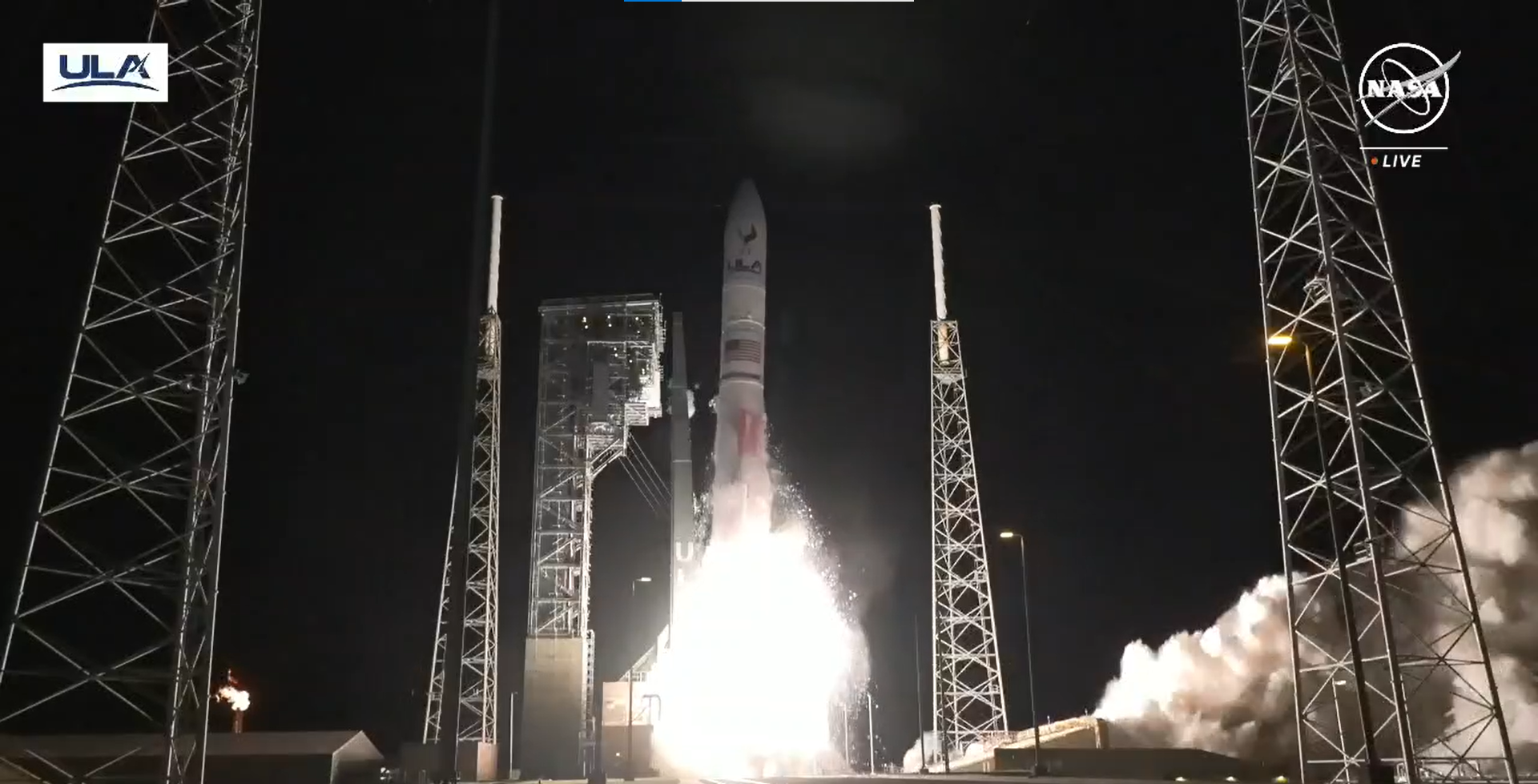|
Jan. 8, 2024 RELEASE:
24-005 NASA Science Heads to Moon on
First US Private Robotic Artemis Flight
As part of NASA’s Commercial Lunar Payload Services initiative, Astrobotic’s Peregrine lander launched on United Launch Alliance’s (ULA)
Vulcan rocket at 2:18 a.m. EST from Launch Complex 41 at Cape Canaveral Space Force Station in Florida. Carrying
NASA scientific instruments as part of its Commercial Lunar Payload Services initiative, Astrobotic’s Peregrine lander launched on United Launch Alliance’s (ULA) Vulcan rocket at 2:18 a.m. EST from Launch Complex 41 at
Cape Canaveral Space Force Station in Florida. Peregrine has about a 46-day journey to reach the lunar surface.
Once on the Moon, NASA instruments
will study the lunar exosphere, thermal properties of the lunar regolith, hydrogen abundances in the soil at the landing site, and conduct radiation environment monitoring. The five NASA science and research payloads aboard the lander
will help the agency better understand planetary processes and evolution, search for evidence of water and other resources, and support long-term, sustainable human exploration. “The first CLPS launch has sent payloads on their way to the Moon – a giant leap for humanity as we prepare to return to the lunar surface
for the first time in over half a century,” said NASA Administrator Bill Nelson. “These high-risk missions will not only conduct new science at the Moon, but they are supporting a growing commercial space economy while showing the strength of American technology
and innovation. We have so much science to learn through CLPS missions that will help us better understand the evolution of our solar system and shape the future of human exploration for the Artemis Generation.” For this CLPS flight, NASA research includes:
Peregrine is scheduled to land on the Moon on Friday, Feb. 23, and will spend approximately 10 days gathering valuable scientific data studying Earth’s nearest neighbor
and helping pave the way for the first woman and first person of color to explore the Moon under Artemis. Learn more about NASA’s CLPS initiative at:
-end- TO RECEIVE NASA NEWS RELEASES NASA news releases and other information are available automatically by sending an e-mail to hqnews-join@newsletters.nasa.gov (no
subject or text in the body is required). To unsubscribe from the list, send an e-mail message to hqnews-leave@newsletters.nasa.gov (no
subject or text in the body is required).
|

